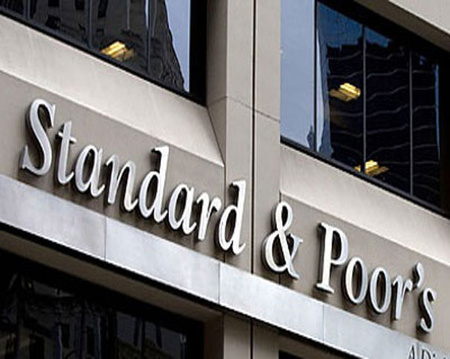Baku, Azerbaijan, Nov. 7
By Elena Kosolapova - Trend:
Standard & Poor's Ratings Services revised its outlook on Kazakhstan-based state-owned electricity transmission monopoly Kazakhstan Electricity Grid Operating Co. (KEGOC) to positive from stable, the rating agency said on Oct. 7.
At the same time, S&P affirmed 'BB+' long-term corporate credit rating.
The agency also affirmed the 'BB+' rating on KEGOC's senior unsecured bank loan from the European Bank For Reconstruction And Development (EBRD). The recovery rating is unchanged at '4', indicating the expectation of average (30-50 percent) recovery in the event of a payment default.
"The outlook change reflects our view that KEGOC's credit ratios might strengthen in the next 12 months following a tariff uplift in November 2014. As we understand, the government has approved a beneficial tariff uplift for KEGOC's services, including a 50 percent rise for transmission services. We think that this will result in boosted cash flow generation and stronger leverage ratios, which could lead us to positively reassess the company's financial risk profile, putting it in the "significant" category," the agency said.
S&P also notes that there is a possibility of a parallel rise in capital expenditure or a requirement to pay a superdividend to its parent, 100- percent state-owned national welfare fund Samruk-Kazyna, which would cancel the benefits of improved cash flow generation and hinder positive development of the financial profile.
KEGOC's ratings are constrained by its short-term (one year) cost-plus-based tariff system, which lacks predictability andtransparency and does not guarantee either full or timely cost recovery, as well as its aged asset portfolio, high country risk, high financial leverage with 100 percentt of debt denominated in euros or U.S. dollars, and large investment program.
Supportive factors include strong ongoing support from the state, a monopoly position in the stable electricity transmission business, which the agency considers to have fairly low operating risk because of its regulated earnings profile, as well as minimal dividend pressure and a long-term maturity profile.
The rating on KEGOC incorporates our assessment of a "very high" likelihood of timely and sufficient extraordinary government support for the company.
S&P currently does not expect any deterioration in the likelihood of extraordinary government support for KEGOC following the partial IPO planned for December 2014. The agency assumes that only a minor stake (10-15 percent) will be placed, and the government will retain incentives and instruments to financially support KEGOC in case of need.
The positive outlook reflects the expectation that positive tariff adjustments will boost KEGOC's cash flow generation. This could lead the agency to reassess the company's financial risk profile to "significant," raising its stand-alone credit profile (SACP) to 'b+', if it believed that KEGOC's main credit metrics would improve on a sustainable basis.
In accordance with the criteria for GREs, a revision of the SACP to 'b+' would result in a one-notch upgrade, all else being equal.
S&P could raise the ratings within the next 12 months if it believes that KEGOC's financial metrics will improve to a level the agency consider in line with a "significant" financial risk profile for the company, including debt to EBITDA below 4.0x and FFO to debt above 20 percent on a sustainable basis. An upgrade would also rely on KEGOC maintaining an "adequate" liquidity position, and no downward changes in the assessment of a "very high" likelihood of extraordinary state support for KEGOC or the sovereign rating on Kazakhstan.
S&P could revise the outlook to stable if KEGOC fails to achieve stronger cash flow generation and leverage ratios, or if a higher level of capex or excessive dividends mitigate the positive developments in tariffs. A downgrade of Kazakhstan by one notch or the likelihood of support falling to "high" would also eliminate the positives stemming from the strengthening of the financial risk profile.






